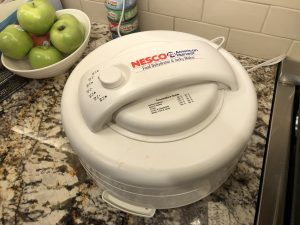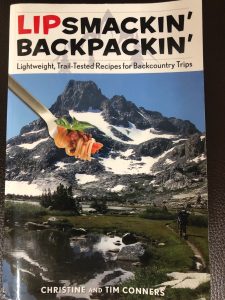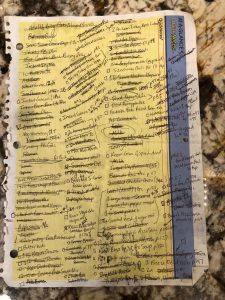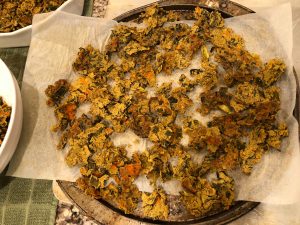
The food dehydrator running 24/7.

The ‘Bible’ of backpacking meals IMHO.
From all the research I’ve done – blogs, websites, podcasts, YouTube – you shouldn’t buy ahead or even plan out what you’ll eat over the course of a long-distance thru hike. Experienced thru hikers are nearly unanimous in cautioning against doing this. Reasons being: your food tastes will change over time; hiker hunger will kick in and you’ll need an amount of food you can’t even imagine yet; and you can buy supplies along the trail so don’t waste the time, energy and money on postage. I’ve followed every bit of advice the online thru-hiking gurus offered – gear choices, going light weight, physical prep, mental prep, starting date. You name it, I listened and followed. With one glaring exception: food resupply.
Have you ever made a decision where even as you were making it, you knew you would probably regret it? But you just. Couldn’t. Stop. Yourself. From. Doing. It.
The PCT is 2,660 miles long, running from the Mexican border in California to the Canadian border in Washington state. It occasionally goes through towns, but the majority of it is remote, mountain terrain. You typically have to ‘hike out’ just to get to a small town that may only have a gas station or mini-mart. Getting to a larger town involves hitch-hiking, Uber (assuming there even is Uber and cell service) or walking many miles off-trail along mountain roads. Yet, the experts say don’t buy ahead and mail yourself food. Really??
Not me. Nope. I went to Trader Joe’s, Costco, Food Lion, Publix, Harris Teeter and Walmart to buy my food – in January, 3 months before I would even set foot on the trail. I spent 10 days in February, recovering from surgery, chopping, cooking, dehydrating and packaging 78 breakfasts, 213 lunch and dinners, 94 servings of GORP and granola, plus instant oatmeal, dried fruits, vegetables and desserts. I still have the receipts but have yet to total up the cost. I’m not sure I want to know how much I spent buying food the thru-hiking community told me not to buy.
My rationale is sound. (I think.). I’m not a 20-something who can hike 20+ mile days subsisting on slim-jims and potato chips bought at a gas station. Nor will I be doing the 5-day McDonalds challenge* from Cajon Pass to Agua Dulce. And what if the campground store shelves are bare and sold out when I get there? — Literally thousands of hikers will be walking the same path. It’s entirely possible this ‘herd’ will buy the last package of everything right before I arrive. What will I do then? Forage in the woods? Yogi** for handouts? Dumpster dive the nearest hiker bin*** assuming the same herd didn’t clean it out yesterday?
No, I’d like to think planning ahead and using my copy of “Lipsmackin’ Backpacking” recipe book will keep me healthy and nutritionally fueled in a way the local mobil-mart can’t. The variety of my meals might even make me the envy of fellow hikers — “Your Trail Thai Stir-Fry sure smells great, mTnfLY,” says my future hiking companions, forlornly looking up from their fourth straight night of Instant Mashed Potatoes.
Yet I just can’t shake the feeling some (a lot?) of this food is going to wind up in a hiker bin. After all, what are the odds the internet thru-hiking gods are wrong? I can already hear them laughing, saying ‘told you so’ as I devour a Little Debbie’s Oatmeal Cookie and Dorito sandwich.
* McDonalds Challenge: Eating only food bought at McDonalds from Cajon Pass/I-15 until the next resupply, typically Wrightwood, Acton or Agua Dulce, CA.
** Yogi: Hiker slang for begging food and supplies off sympathetic day and section hikers. It apparently helps to look hungry and downtrodden
***Hiker Bin: Repository of excess food and supplies that hikers donate when they have over-supplied

One side of my shopping list

Looks like cat vomit but tastes great. Dehydrated couscous with lentils, veggies and curry
1 Comment
You.are.suoer.funny!!!!!